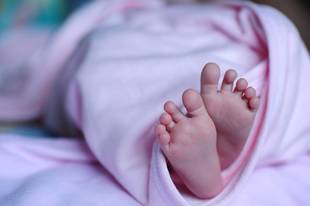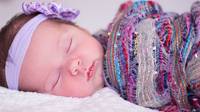
Major Adjustment of Infancy
Infants must make four major adjustments before they can resume their developmental progress. If they do not make them quickly, their lives will be threatened. While these adjustments are being made, there is no developmental progress. Instead, the infant remains on a plateau or may even regress to a lower stage of development. These adjustments are described below:
Adjustments of Infancy
Temperature Changes
There is a constant temperature of 100 degrees F in the uterine sac, while temperatures in the hospital or home may vary from 60 to 70 degrees.
Breathing
When the umbilical cord is cut, infants must begin to breathe on their own.
Sucking and Swallowing
The infant must now get nourishment by sucking and swallowing, instead of receiving it through the umbilical cord. These reflexes are imperfectly developed at birth, and the infant often gets less nourishment than is needed and thus loses weight.
Elimination
The infant’s organs of elimination begin to work soon after birth; formerly, waste products were eliminated through the umbilical cord.
Every newborn infant finds adjustment to postnatal life difficult at first. Some have trouble adjusting to temperature changes and develop colds, which may turn into pneumonia. Others find breathing difficult and must be given oxygen. Most choke when they attempt to suck and swallow, and many regurgitate more than they are able to retain, in which case they get less nourishment than they need to grow or even to retain their birth weight. Few have any real trouble eliminating urine, but many have difficulties with fecal elimination.
Three common indications of the difficulty of adjusting to postnatal life are given below:
Indications of the Difficulty of Adjustment to Postnatal Life
Loss of Weight
Because of difficulties in adjusting to sucking and swallowing, the newborn infant usually loses weight during the first week of postnatal life.
Disorganized Behavior
For the first day or two of postnatal life, all infants show relatively disorganized behaviour, such as irregularities in breathing rate, frequent urinations and defecations, wheezing, and regurgitation. This is due partly to pressure on the brain during birth, which results in a stunned state, and partly to the undeveloped state of the autonomic nervous system, which controls body homeostasis.
Infant Mortality
Even today, the rate of infant mortality during the first two days of postnatal life is high. The causes of infant mortality are many and varied.
Conditions Influencing Adjustment to Postnatal Life
Many conditions influence the success with which infants make the necessary adjustments to postnatal life. The most important of these, as research to date indicates, are the kind of prenatal environment, the type of birth and experiences associated with it, the length of the gestation period, parental attitudes, and postnatal care. Because of their importance, each of these conditions will be discussed in detail.
Prenatal Environment
The first condition that influences the kind of adjustment infants make to postnatal life is the kind of prenatal environment they had. A healthy prenatal environment will contribute to good adjustments to postnatal life.
On the other hand, there are many kinds of intrauterine disturbance that can and often do cause an infant to be born, as Schwartz has pointed out, “with severe injuries and then be subject to a miserable life”. Inadequate prenatal care of the mother, as a result of either poverty or neglect, is often responsible for the development of unfavourable conditions in the intrauterine environment which affect the developing child and lead to complications during childbirth, both of which affect the kind of adjustment the infant makes.
Malnutrition of the mother during pregnancy has been found to be responsible for premature births, stillbirths, and infant mortality during the early days of life. Infants whose mothers suffer from diabetes have more difficulties in adjustment and a higher incidence of mortality than infants whose mothers are nondiabetic.
Unquestionably one of the most important conditions that contribute to difficulties in postnatal adjustment is a prenatal environment characterized by prolonged and intense maternal stress. As was mentioned earlier, this leads to complications during pregnancy and childbirth. Maternal stress also causes the fetus to become hyperactive during the last months of pregnancy, and this condition tends to persist after birth, manifesting itself in feeding difficulties, failure to gain weight, sleep problems, general irritability, distractibility, and a host of other conditions that make adjustment to postnatal life difficult. In commenting on the effects of maternal stress during pregnancy on the infant’s later adjustment, Sontag has emphasized:
To all intents and purposes, a newborn infant with such a background is a neurotic infant when he is born – the result of an unsatisfactory fetal environment. In this instance, he does not have to wait until childhood for a bad home situation or other cause to make him neurotic. It was done for him before he even saw the light of day.
Kind of Birth
The second condition that influences the kind of adjustment that will be made to postnatal life is the kind of birth the infant experiences. Many traditional beliefs about birth and how it affects the individual’s adjustments to life persist even today. For example, there are many beliefs about auspicious and inauspicious times to be born. There is also the belief that the ease or difficulty of birth affects postnatal adjustments and the belief that a premature baby will never be as strong as one born at full term or make a successful adjustment to life.
Even with our modern medical techniques, birth is a hazardous experience. Jeffcoate has pointed out that the “most hazardous journey made by any individual is through the four inches of the birth canal”. Schwartz further emphasized the hazardous nature of birth when he said, “Birth is almost without exception a brutal process which endangers the life and health of the child”.
There are five kinds of birth, each with its distinctive characteristics. These are explained below:
Kinds of Birth
Natural, or Spontaneous, Birth
In a natural birth, the position of the fetus and its size in relation to the mother’s reproductive organs allow it to emerge in the normal, head-first position.
Breech Birth
In a breech birth, the buttocks appear first, followed by the legs and finally the head.
Transverse Birth
In a transverse presentation, the fetus is positioned crosswise in the mother’s uterus, Instruments must be used for delivery unless the position can be changed before the birth process begins.
Instrument Birth
When the fetus is too large to emerge spontaneously or when its position makes normal birth impossible, instruments must be used to aid in delivery.
Caesarean Section
If x-rays taken during the latter part of pregnancy indicate that complications may result if the infant emerges through the birth canal, the baby is brought into the world through a slit made surgically in the mother’s abdominal wall.
The infant who has been born spontaneously usually adjusts more quickly and more successfully to the postnatal environment than one whose birth has been difficult enough to require use of instruments or caesarean section.
More hazards are associated with instrument births and caesarean sections than with spontaneous births. The more difficult the birth, the greater the chance of damage and the more severe the damage. Small women show a relatively high stillbirth rate as compared with larger women, often because instruments must be used to aid in delivery. Motor disabilities, paralysis, cerebral palsy, and mental deficiency are frequently reported as aftermaths of difficult births, especially when instruments have had to be used.
Babies born by caesarean section are the quietest, crying less than those born spontaneously or with the aid of instruments and showing greater lethargy and decreased reactivity. As a result, they normally make better adjustments to their postnatal environment – unless they have had difficulty establishing respiration, which may cause temporary or permanent brain damage. Neonatal deaths are more frequent among those born by caesarean section than among those born spontaneously or woth the aid of instruments.


















